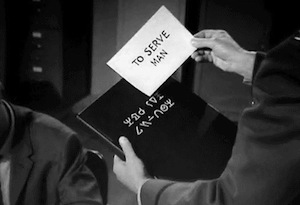Translation, Multiple Meanings and Cookbooks
Medical Pharmaceutical Translations • Feb 27, 2017 12:00:00 AM

Last month, we discussed how multiple meanings matter immensely in translation. We gave quite a few examples such as how you can swim in a pool, play pool or be part of an office pool. You can eat squash, play squash or squash a squash, be in a jam, jam your thumb, be part of a music jam, spread jam on your bread or be stuck in a traffic jam. You can see a lightning bolt, fasten something with a bolt. All of this is enough to make you bolt out of the room! The point is to illustrate how multiple meanings must be addressed in the translation process and how translation is– at its core – a human endeavor, unable to be perfectly captured by machine translation. No matter how hard humans try to make machines replicate the process, they fall exceedingly short of the mark.
With the exception of quick turnaround time and often free translations, the risks of computer translation still far outweigh the benefits. A single word or phrase is fine, but the accuracy is low and could end up costing more in the end.
Sure, there have been many strides in machine translation. There are rule-based and phrase-based engines, which tackle translation in different ways. But even the best of the best, neural machine translation (NWT), which Google is now using, fails to deliver.
Just this month in Seoul, South Korea, four professional translators scored one for the human team. They were pitted against three artificial intelligence (AI) language software programs provide by Google and two other top-notch high-tech companies. Participants were given 50 minutes to translate random English articles into Korean and vice versa. Without knowing the author, human or not, all translated works were reviewed. The outcome? According to Kang Dae-young, director of the International Interpretation Translation Association, the final works of the professional translators were far better than the NMT machines.
NMT is a new system that considers an entire sentence as one unit, unlike earlier systems which translate words and phrases independently. Even with this more comprehensive framework, organizers stated that 90 percent of the machine translated texts were grammatically awkward, and “machines were unable to understand context.”
And context, is, as you know, what translation is all about. Throw in multiple meanings similar to those listed above and the whole process could go askew. That is why the human translators in the above battle scored an average of 25 out of 30 in translating Korean into English, while the AI software scored between 10 and 15.
Language is complex and ever-evolving; translation is not an easy task. When multiple meanings stand in the way of crossing over into another language, computers can’t perform as well as humans.
In 1960, early machine translation researcher Bar-Hillel provided a now classic example of the difficulty of machine translation. When he presented a simple sentence. “The box is in the pen.” A human could more quickly decipher whether the pen was a writing implement or a child’s play pen, a short form of the word “penitentiary”, a female swan, or a pen for a pig. A computer would need other variables, such as the size of the objects in question. Change the sentence to “the pen is in the box,” and it gets even more ambiguous. Go back to all the other meanings. Understanding the context, the situation and the facts about the world in which we live helps translators preserve the meaning(s) when going back and forth between two languages.
In an episode of “The Twilight Zone” aliens come to Earth on the guise of aiding humanity by sharing their advanced technology. They bring with them a book written in their native language. The humans eventually decipher its title, “To Serve Man.” Happy to know that the aliens where there to serve them, the humans greet them with open arms, never once thinking that the book was actually a cookbook.
Meanings count in translation.
The goal of AI-based translations is to make computers learn without being “explicitly programmed” in an effort to improve translation quality and reduce errors. Some say AI is at the elementary school stage, with plans of taking a fast track and graduating college in a few years. We will see. In the meantime, humans will tackle the job, wrestle with multiple meanings, know them well and… never trust an alien with a cook book.
Ilona Knudson
#machinetranslation #multiplemeanings #neuralmachinetranslation #translations
